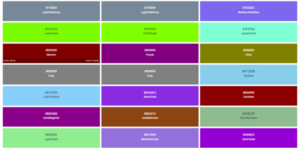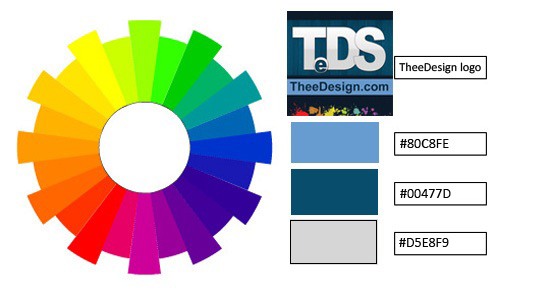In the ever-evolving realm of web design, where trends surge and recede swiftly, one pivotal question persists: do concepts birthed in the internet’s infancy maintain their relevance today? This exploration delves into the enduring significance of web safe colors. A once indispensable tool for designers seeking consistency across varied monitors.
Origins of Web Safe Colors
The 1990s marked the rise of “web safe colors” as a response to the challenge of ensuring a consistent appearance on monitors restricted to a mere 256 colors. This constraint stemmed from the prevalence of 8-bit and 16-bit color displays. Hence prompting the establishment of a universally supported color palette—a foundation for design cohesion.
Technological Advancements
Fast forward to the present, and technological strides have revolutionized the design landscape. Modern monitors now boast support for millions of colors, presenting designers with an expansive spectrum. Web browsers and operating systems have evolved, demonstrating a more refined approach to color rendering. This prompts a critical inquiry: does the adherence to these colors remain pertinent in this technologically evolved era?

Accessibility Considerations
While the constraints that initially birthed web colors have eased, their relevance endures, particularly in the realm of accessibility. Designers must now consider users with visual impairments or those reliant on grayscale displays. Designs heavily dependent on colors outside the web safe spectrum may pose challenges for these users. Thus emphasising the ongoing importance of considering accessibility.
Device Diversity Challenges
Furthermore, the proliferation of diverse devices adds another layer of complexity to contemporary web design. From smartphones to smart TVs, designers must navigate a spectrum of platforms. Despite the widespread support for extensive color ranges on modern devices, the importance of consistency persists. Web safe colors, acting as a reliable fallback option, ensure a more predictable and reliable user experience across this diverse array of devices.
Performance Optimization
Beyond the visual considerations, web safe colors contribute significantly to website performance optimization. In regions where high-speed internet remains a luxury, a limited color palette plays a crucial role in reducing image file sizes. This not only ensures quicker loading times but also proves vital for mobile users and those accessing the web in bandwidth-restricted areas.
Branding Consistency
Additionally, in the context of branding, maintaining a consistent color scheme is paramount for brand recognition. Here, web colors emerge as a foundational element, providing a reliable reference point that seamlessly aligns with a brand’s broader marketing materials. This consistency aids in reinforcing the brand identity across various digital touchpoints.
Evolution to a Strategic Choice
However, it’s essential to recognize that the significance of web safe colors has evolved from a technical necessity to a strategic choice. In the present design landscape, where designers enjoy the freedom to explore a broader spectrum of colors, the decision to incorporate these colors becomes deliberate. Finding the delicate balance between creative expression and practicality remains crucial for a seamless and inclusive user experience.
The Future
Looking ahead, the future of these colors appears to be intertwined with evolving design methodologies. As technology advances and user expectations shift, web designers will continue to adapt the strategic use of web safe colors. Therefore ensuring a harmonious blend of creativity and practicality in the dynamic world of web design.
Conclusion
In conclusion, the stringent constraints that once dictated the use of these web colors have given way to a strategic and nuanced approach in contemporary web design. Designers strategically leverage these colors, considering accessibility, device diversity, and performance optimization. Therefore, the enduring relevance of web safe colors showcases their transformation from a necessity to a timeless and strategic design choice. Thus ensuring a harmonious equilibrium between creativity and the practical considerations that guarantee an enriched user experience.

